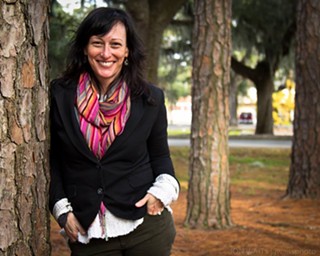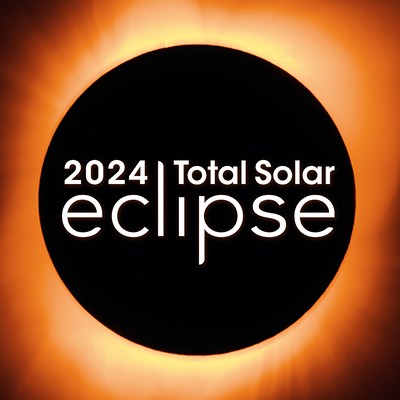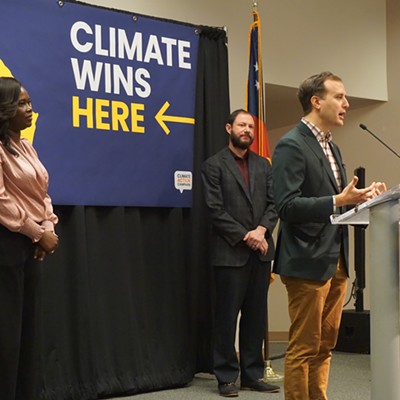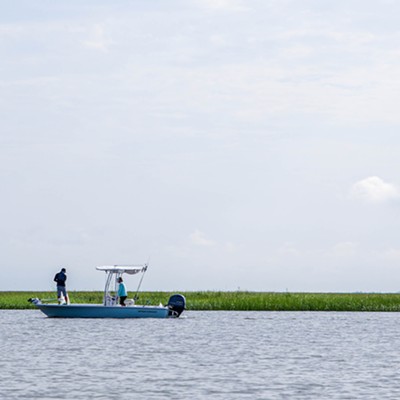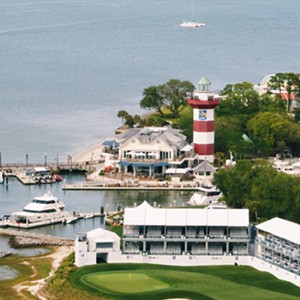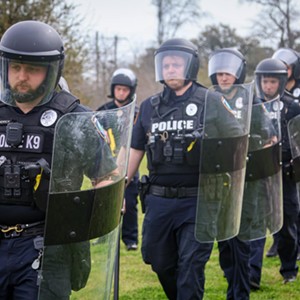Look, we know keeping up with all the local ecological concerns can be overwhelming. Here are some recent developments on the environmental scene:
Monitoring no more
The U.S. Dept. of Energy announced last month that it won’t be able to fund independent radiation monitoring in the Georgia communities surrounding the Savannah River Site (SRS). The site currently houses the Savannah River National Laboratory and the Tritium Extraction Facility on 300 acres south of Augusta, just across the river from nuclear power facility Plant Vogtle.
Last week, Plant Vogtle received the government’s blessing to begin construction on two new reactors.
Federally–funded testing of drinking water, soil, air and fish in the area has been shelved since 2003, but in 2010, DOE officials offered $750K a year for five years to pay for third–party analysis. Last year the offer was cut down to $300K a year for three years, and now the DOE says it won’t be writing any checks at all.
Jim Giusti, DOE spokesperson at SRS, lamented the decision not to move the grant forward.
“We understand Georgia’s desire to have an independent review,” he told Connect. “But because of budget constraints, we just don’t have the money.”
South Carolina’s funds to monitor radiation levels around SRS are still in place, and the need for another program across the state line was seen as redundant.
Giusti said SRS also performs rigorous daily analysis of its own and that according to its data, radiation levels have been decreasing every year in the water and soil.
“We characterize, quantify and evaluate the effects and impact of the Savannah River Site to the public and the environment,” he assured.
Tom Clements, the Nonproliferation Policy Director for the Alliance for Nuclear Accountability and longtime SRS watchdog, had been hoping the DOE would “reprogram” funds from another account to resuscitate the monitoring program.
He doesn’t buy the DOE’s plea of poverty.
“It isn’t very much money,” Clements wrote in an email, referring to DOE’s overall budget, and wondered if there was “some hidden political reason inside the DOE for blocking this.”
In other SRS news, the Blue Ribbon Commission on America’s Nuclear Future released its long–awaited nuclear waste strategy last month. Though it didn’t come to a permanent solution for the disposal of what comes out of nuclear energy’s back end, it reiterated the need for “prompt efforts” to develop interim “consolidated storage facilities” where spent fuel can sit in the meantime.
Those hoping to direct more revenue streams towards SRS want to offer up the site as a repository for the entire nation’s spent nuclear fuel, not only to gather up the government dollars sure to follow but to boost the site’s burgeoning reprocessing plant, which continues to be built in spite of not having the proper permit. Since SRS is already storing toxic waste from Plant Vogtle and its other tenants, the line of reasoning is that it may as well take on everyone else’s.
Clint Wolfe, the executive director of pro–nuclear Citizens for Nuclear Technology Awareness, saw the Commission recommendation as an opportunity to cheerlead for moving such a plan forward.
“With this expertise and more already existing at SRS, it would be foolish to try to reproduce these capabilities at any other site,” Wolfe wrote in an Aiken Standard op–ed on Feb. 3.
Clements’ response echoes that of several Georgia and South Carolina conservation groups: “We will not allow the Savannah River Site to become the de facto Yucca Mountain without a big fight.”
Water woes
Since last May, the condition of south Georgia’s drought has been upgraded from “extreme” to “exceptional,” the highest drought classification. For now it might mean only being allowed to water your lawn on certain days, but there may be drier times ahead:
According to U.S. Army Corps of Engineer data, releases from the Thurmond Dam into the Savannah River have been steadily decreasing for the past decade. Average yearly outflows rarely dipped below 5000 cubic feet per second (cfs) from 1954 to 2000, but have dropped into the 4000s several times since.
This presents problems for water–intensive projects like Plant Vogtle’s new-era 3 and 4 reactors, projected to draw up to 40 million gallons a day from the river, as well as the Corps’ own Savannah Harbor Deepening Plan, which, based on the current water data, may introduce a higher percentage of saltwater into the freshwater supply than previously posited.
Steve Willis, chair of the Georgia Sierra Coastal Group, is concerned about the drop in flow.
“The Corps should explain these seemingly significant changes and re–evaluate their assertion that their models and analysis can accommodate any reasonably expected changes in climate patterns and sea rise,” wrote Willis in a forum earlier this year.
“To be wrong on this could have grave implications not just for the Corps’ projects, but for the future environmental, economic and quality of life of the Lower Savannah.”
Willis says he has yet to receive any response from the Corps, but hopes Savannah Water and Sewer director John Sawyer can answer these and other questions about protecting Savannah’s freshwater supply.
Sawyer speaks at the next Sierra Group meeting Thursday, Feb. 16 at 7 p.m. at First Presbyterian Church at 520 Washington Ave. The event is free and open to the public.
Fisherman's friend
It’s known in Georgia’s General Assembly as the “Saltwater Fishery Management Improvement Act of 2012,” but Doug Haymans, Coastal Resources Division Policy Coordinator for the Dept. of Natural Resources, calls it a “labor of love.”
Haymans and DNR Coastal Resources Director Spud Woodward have helped author a new bill on the docket in the House of Representatives that could change how Georgia’s saltwater fisheries are managed.
House Bill 869 asks for several amendments to Title 27 of the Official Code of Georgia, the most significant of which would give the Board of Natural Resources more authority to respond to environmental changes, implement science–based measures and set catch and size limits of the fish and invertebrate species living along the coast.
In its current state, the management of saltwater fishing is a labyrinth of bureaucracy, with Georgia General Assembly retaining responsibility for some species while the Board of Natural Resources and the Commissioner of Natural Resources oversee others.
For example, when DNR officers suspected that the spotted sea trout was being overfished, it took over a year for official fishing limits to be set.
“The General Assembly was the on the is the only one who could limit the numbers, but they only meet three months out of the year,” explained Haymans from Atlanta where he was presenting the bill. “We couldn’t put the brakes on.”
He says the bill streamlines saltwater fishing through DNR just like the freshwater and wildlife policies already in place. It would also allow for short term closure on a species in the case of an environmental disaster.
“The assembly will still set the framework, but this will allow DNR better day–to–day management of these fish populations,” he said.
Tybee Island–based Coastal Conservation Association Executive Director Michael Denmark says his group fully supports the bill. He and the CCA have organized a program for anglers, fisherman and anyone else interested in the deeper aspects of saltwater fisheries management.
“People don’t always understand the reasons behind catch limits and size limits,” said Denmark, who was also in Atlanta last week to lend his support to the bill.
“We wanted to give people an opportunity to see how complex the entire process is to the well–being of the Georgia coast.”
The program takes place at 6 p.m. Wednesday, Feb. 15 at Armstrong Center, 13040 Abercorn St., and features expert speakers, including the aforementioned Woodward as well as John Duren, Commissioner for Georgia on the Atlantic States Marine Fisheries Commission, Duane Harris of the South Atlantic Fishery Management Council (SAFMC) and Dr. Carolyn Belcher, Scientific Advisor to the SAFMC.
The event is free and open to the public.

